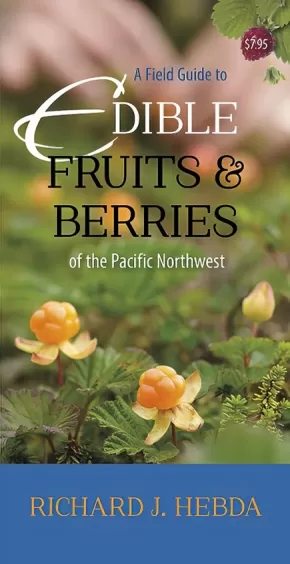Richard J. Hebda
Richard Hebda joined the Royal BC Museum in 1980 and retired after 37 years in 2017. Richard was Curator of Botany and Earth History from 1986 until retirement.
Books (2)
Synopsis:
If wild berry foragers followed vague advice such as "berries of red and you'll soon be dead" or "berries of blue will do harm to you" imagine how many of nature's delicacies would be passed by! On the other hand, for anyone who has thought twice before popping that delicious-looking morsel into their mouth, the reality of poisonous berries growing in the wild is reason enough to be berry aware.
With a basketful of information presented on a two-sided, lightweight and pocket-sized pamphlet, A Field Guide to Edible Fruits and Berries of the Pacific Northwest is the perfect resource for wild fruit- and berry-lovers of all ages, whether on a short walk in the woods or a backcountry hiking trip. In addition to more commonly identified specimens such as strawberries, blueberries and blackberries, explore the delicious possibilities of evergreen huckleberries, cloudberries and crowberries, and learn how to tell the edible lingonberry from the poisonous baneberry.
Each entry is illustrated with a colour photograph and accompanied by a brief description and seasonal availability to help identify more than forty kinds of fruits and berries found in the wild, along with information on how best to prepare and preserve the edible ones.
Additional Information
2 pages | 37.00" x 9.00" | field guide with 50 colour photographs
Synopsis:
Nancy Turner and Richard Hebda present the results of many years of working with botanical experts from the Saanich Nation on southern Vancouver Island. Elders Violet Williams, Elsie Claxton, Christopher Paul and Dave Elliott pass on their knowledge of plants and their uses to future generations of Saanich and Coast Salish people, and to anyone interested in native plants. Saanich Ethnobotany includes detailed information about the plants that were traditionally harvested to use in all aspects of Saanich life, such as for food and medicines, and to make tools, buildings and weapons. Each plant is listed by its common (English), scientific and Saanich names. Each listing contains a brief botanical description with a colour photograph, where to find the plant and how it was used traditionally by the Saanich people. This important book celebrates the richness and tremendous value of locally based knowledge in a rapidly changing world.
Authenticity Note: This book has received the Authentic Text label because of its contributions from Elders Violet Williams, Elsie Claxton, Christopher Paul, and Dave Elliott.








